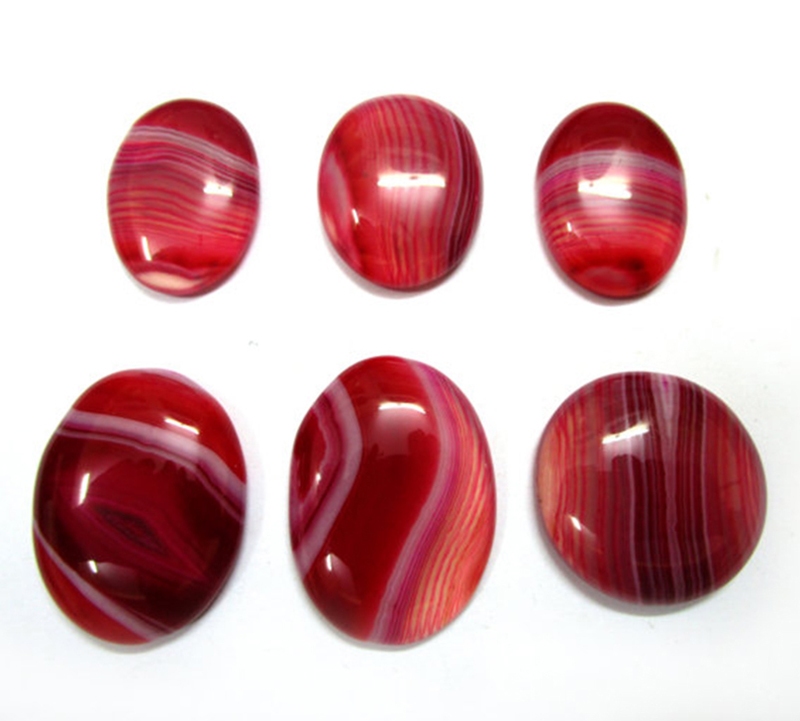|
LNWR Samson Class
The LNWR ''Samson'' Class was a class of ninety steam locomotives built by the London and North Western Railway at their Crewe Works between 1863 and 1879. They were officially designated Curved Link 6-ft Passenger due to the use of Stephenson valve gear which included a curved expansion link between the fore and back eccentric rods (earlier LNWR designs had used the Allan valve gear which had a straight expansion link) and the use of diameter wheel centres, which, together with thick tyres gave a driving wheel diameter of . Ostensibly a mixed traffic design, they were the first locomotives with coupled driving wheels to be allocated for passenger duties on the LNWR. They were designed by John Ramsbottom who had fifty built, all without cabs and with pierced driving wheel splashers. Ramsbottom's successor F. W. Webb, built forty more, all with cabs. The earlier locomotives also gained cabs, and all eventually had their splashers filled in. All ninety locomotives were 'rene ... [...More Info...] [...Related Items...] OR: [Wikipedia] [Google] [Baidu] |
John Ramsbottom (engineer)
John Ramsbottom (11 September 1814 – 20 May 1897) was an English mechanical engineer. Born in Todmorden, then on the county border of Yorkshire and Lancashire. Ramsbottom was the son of a steam cotton mill owner. He learned about steam engines, rebuilding his father's and also invented the weft fork (this has also been attributed to James Bullough) that enabled looms to be run at high speed. He also created many inventions for railways but his main legacy is the split metal piston ring, which he invented and later perfected. Virtually all reciprocating engines continue to use these today. Career In 1839 Ramsbottom joined Sharp, Roberts and Company of Manchester who made both industrial stationary engines and steam locomotives, and learned of the latter. He was recommended by Charles Beyer in 1842 to become locomotive superintendent of the Manchester and Birmingham Railway (M&BR). In 1846 the M&BR merged and became the London and North Western Railway (LNWR), and ... [...More Info...] [...Related Items...] OR: [Wikipedia] [Google] [Baidu] |
Onyx
Onyx primarily refers to the parallel banded variety of chalcedony, a silicate mineral. Agate and onyx are both varieties of layered chalcedony that differ only in the form of the bands: agate has curved bands and onyx has parallel bands. The colors of its bands range from black to almost every color. Commonly, specimens of onyx contain bands of black and/or white. Onyx, as a descriptive term, has also been applied to parallel banded varieties of alabaster, marble, calcite, obsidian and opal, and misleadingly to materials with contorted banding, such as "Cave Onyx" and "Mexican Onyx". Etymology ''Onyx'' comes through Latin (of the same spelling), from the Ancient Greek , meaning "claw" or "fingernail". Onyx with flesh-colored and white bands can sometimes resemble a fingernail. The English word "nail" is cognate with the Greek word. Varieties Onyx is formed of bands of chalcedony in alternating colors. It is cryptocrystalline, consisting of fine intergrowths of the silica m ... [...More Info...] [...Related Items...] OR: [Wikipedia] [Google] [Baidu] |
River Trent
The Trent is the third-longest river in the United Kingdom. Its source is in Staffordshire, on the southern edge of Biddulph Moor. It flows through and drains the North Midlands. The river is known for dramatic flooding after storms and spring snowmelt, which in the past often caused the river to change course. The river passes through Stoke-on-Trent, Stone, Rugeley, Burton upon Trent and Nottingham before joining the River Ouse at Trent Falls to form the Humber Estuary, which empties into the North Sea between Hull in Yorkshire and Immingham in Lincolnshire. The wide Humber estuary has often been described as the boundary between the Midlands and the north of England. Name The name "Trent" is possibly from a Romano-British word meaning "strongly flooding". More specifically, the name may be a contraction of two Romano-British words, ''tros'' ("over") and ''hynt'' ("way"). This may indeed indicate a river that is prone to flooding. However, a more likely explanat ... [...More Info...] [...Related Items...] OR: [Wikipedia] [Google] [Baidu] |
Tubal (character)
''The Merchant of Venice'' is a play by William Shakespeare, believed to have been written between 1596 and 1598. A merchant in Venice named Antonio defaults on a large loan provided by a Jewish moneylender, Shylock. Although classified as a comedy in the First Folio and sharing certain aspects with Shakespeare's other romantic comedies, the play is most remembered for its dramatic scenes, and it is best known for the character Shylock and his famous demand for a "pound of flesh" in retribution. The play contains two famous speeches, that of Shylock, "Hath not a Jew eyes?" on the subject of humanity, and that of Portia on " the quality of mercy". Debate exists on whether the play is anti-Semitic, with Shylock's insistence on his legal right to the pound of flesh being in opposition to Shylock's seemingly universal plea for the rights of all people suffering discrimination. Characters * Antonio – a prominent merchant of Venice in a melancholic mood. * Bassanio – Antoni ... [...More Info...] [...Related Items...] OR: [Wikipedia] [Google] [Baidu] |
Duke Of Sutherland
Duke of Sutherland is a title in the Peerage of the United Kingdom which was created by William IV in 1833 for George Leveson-Gower, 2nd Marquess of Stafford. A series of marriages to heiresses by members of the Leveson-Gower family made the Dukes of Sutherland one of the richest landowning families in the United Kingdom. The title remained in the Leveson-Gower family until the death of the 5th Duke of Sutherland in 1963, when it passed to the 5th Earl of Ellesmere from the Egerton family. The subsidiary titles of the Duke of Sutherland are: Marquess of Stafford (created 1786), Earl Gower (1746), Earl of Ellesmere, of Ellesmere in the County of Shropshire (1846), Viscount Trentham, of Trentham in the County of Stafford (1746), Viscount Brackley, of Brackley in the County of Northampton (1846), and Baron Gower, of Sittenham in the County of York (1703). The marquessate of Stafford, the earldom of Gower and the viscountcy of Trentham are in the Peerage of Great Britai ... [...More Info...] [...Related Items...] OR: [Wikipedia] [Google] [Baidu] |
Memnon (horse)
Memnon (foaled 1822) was a British Thoroughbred racehorse and sire best known for winning the classic St Leger Stakes in 1825. In a racing career which lasted from 1824 until 1828 he ran fifteen times and won nine races. Bred and originally trained in Yorkshire, he was unbeaten in two races as two-year-old in 1824, including the Champagne Stakes and won the York version of the St Leger the following spring. In the St Leger at Doncaster in September 1825, he was successful as the heavily backed favourite in a record field of thirty runners. Memnon was later trained at Newmarket and recorded his most important subsequent victory when winning the Ascot Gold Cup as a five-year-old in 1827. After standing as a breeding stallion for five years in England with moderate results, he was sold and exported to Russia. Background Memnon was a "long, loose, big and leggy" bay horse with one white foot bred at Bishop Burton in Yorkshire by Richard Watt. Memnon was sired by the Duke of Grafton' ... [...More Info...] [...Related Items...] OR: [Wikipedia] [Google] [Baidu] |
Hekla
Hekla (), or Hecla, is a stratovolcano in the south of Iceland with a height of . Hekla is one of Iceland's most active volcanoes; over 20 eruptions have occurred in and around the volcano since 874. During the Middle Ages, the Icelandic Norse called the volcano the "Gateway to Hell". Hekla is part of a volcanic ridge, long. The most active part of this ridge, a fissure about long named , is considered to be within Hekla proper. Hekla looks rather like an overturned boat, with its keel being a series of craters, two of which are generally the most active. The volcano's frequent large eruptions have covered much of Iceland with tephra, and these layers can be used to date eruptions of Iceland's other volcanoes. Approximately 10% of the tephra created in Iceland in the last thousand years has come from Hekla, amounting to 5 km3. Cumulatively, the volcano has produced one of the largest volumes of lava of any in the world in the last millennium, around 8 km3. Etymol ... [...More Info...] [...Related Items...] OR: [Wikipedia] [Google] [Baidu] |
Croxteth
Croxteth is a suburb of Liverpool, Merseyside, England, and a Liverpool City Council Ward. Although housing in the area is predominantly modern, the suburb has some notable history. At the United Kingdom 2011 Census it had a population of 14,561. History The name is believed to derive from a contraction of ''Crocker's Staithe'', or the landing place of Crocker, which is a likely reference to a Viking landing via the River Alt, which passes through Croxteth and at the time of the Viking invasion of Britain was navigable through the area. The similar root is also possible for Toxteth. Prehistoric tools were found on a site in Croxteth in 1992, though there were no signs of any permanent settlement. Since then the land has been developed. The suburb is adjacent to Croxteth Hall, the former home of the Earls of Sefton, and close to West Derby, another suburb that predates Liverpool, being recorded in the Domesday Book. The "Dog and Gun" public house (demolished in 2005) was a h ... [...More Info...] [...Related Items...] OR: [Wikipedia] [Google] [Baidu] |
Falstaff
Sir John Falstaff is a fictional character who appears in three plays by William Shakespeare and is eulogised in a fourth. His significance as a fully developed character is primarily formed in the plays '' Henry IV, Part 1'' and ''Part 2'', where he is a companion to Prince Hal, the future King Henry V of England. Falstaff is also featured as the buffoonish suitor of two married women in ''The Merry Wives of Windsor''. Though primarily a comic figure, Falstaff embodies a depth common to Shakespeare's major characters. A fat, vain, and boastful knight, he spends most of his time drinking at the Boar's Head Inn with petty criminals, living on stolen or borrowed money. Falstaff leads the apparently wayward Prince Hal into trouble, and is ultimately repudiated after Hal becomes king. Falstaff has since appeared in other media, including operas by Giuseppe Verdi, Ralph Vaughan Williams, and Otto Nicolai, and in Orson Welles' 1966 film '' Chimes at Midnight''. The operas focus ... [...More Info...] [...Related Items...] OR: [Wikipedia] [Google] [Baidu] |
Woodlark
The woodlark or wood lark (''Lullula arborea'') is the only extant species in the lark genus ''Lullula''. It is found across most of Europe, the Middle East, western Asia and the mountains of north Africa. It is mainly resident (non- migratory) in the west of its range, but eastern populations of this passerine bird are more migratory, moving further south in winter. There are two subspecies of woodlark, ''L. a. arborea'' and ''L. a. pallida''. The former is native to northern regions of Europe, while the latter can be found in the south of the woodlark's range. Their diet is mostly composed of seeds but also includes insects during the breeding period. A comparatively small bird, the woodlark is between 13.5 and 15 centimetres long and roughly 20% shorter than the skylark. It is a brown bird with a pale underside and has a white-tipped tail. Taxonomy and systematics The woodlark was described by the Swedish naturalist Carl Linnaeus in 1758 in the tenth edition of his ''System ... [...More Info...] [...Related Items...] OR: [Wikipedia] [Google] [Baidu] |
Theorem
In mathematics, a theorem is a statement that has been proved, or can be proved. The ''proof'' of a theorem is a logical argument that uses the inference rules of a deductive system to establish that the theorem is a logical consequence of the axioms and previously proved theorems. In the mainstream of mathematics, the axioms and the inference rules are commonly left implicit, and, in this case, they are almost always those of Zermelo–Fraenkel set theory with the axiom of choice, or of a less powerful theory, such as Peano arithmetic. A notable exception is Wiles's proof of Fermat's Last Theorem, which involves the Grothendieck universes whose existence requires the addition of a new axiom to the set theory. Generally, an assertion that is explicitly called a theorem is a proved result that is not an immediate consequence of other known theorems. Moreover, many authors qualify as ''theorems'' only the most important results, and use the terms ''lemma'', ''proposition'' ... [...More Info...] [...Related Items...] OR: [Wikipedia] [Google] [Baidu] |
Shap
Shap is a linear village and civil parish located among fells and isolated dales in Eden district, Cumbria, England, in the historic county of Westmorland. The parish had a population of 1,221 in 2001, increasing slightly to 1,264 at the 2011 Census. Location The village lies along the A6 road and the West Coast Main Line, and is near to the M6 motorway. It is situated from Penrith and about from Kendal. Shap is on the route of the Coast to Coast Walk. Etymology Early (12th and 13th century) forms such as ''Hep'' and ''Yheppe'' point to an Old Norse rendering ''Hjáp'' of an Old English original ''Hēap'' = "heap", (of stones), probably referring to an ancient stone circle, cairn, or to the Shap Stone Avenue just to the west of the village. History Although Shap is geographically a small village, it is legally a market town with a charter dating from the 17th century. The parish was, between 1905 and 1935, administered by an urban district council. At one time, the ... [...More Info...] [...Related Items...] OR: [Wikipedia] [Google] [Baidu] |
_(Heat_Engines%2C_1913).jpg)



_Detail_from_map_of_Iceland_1585.jpg)



